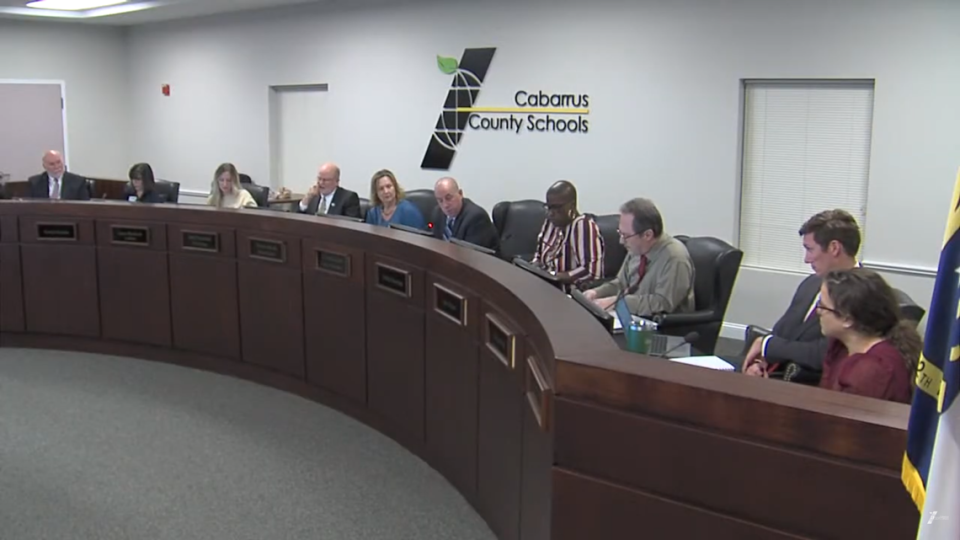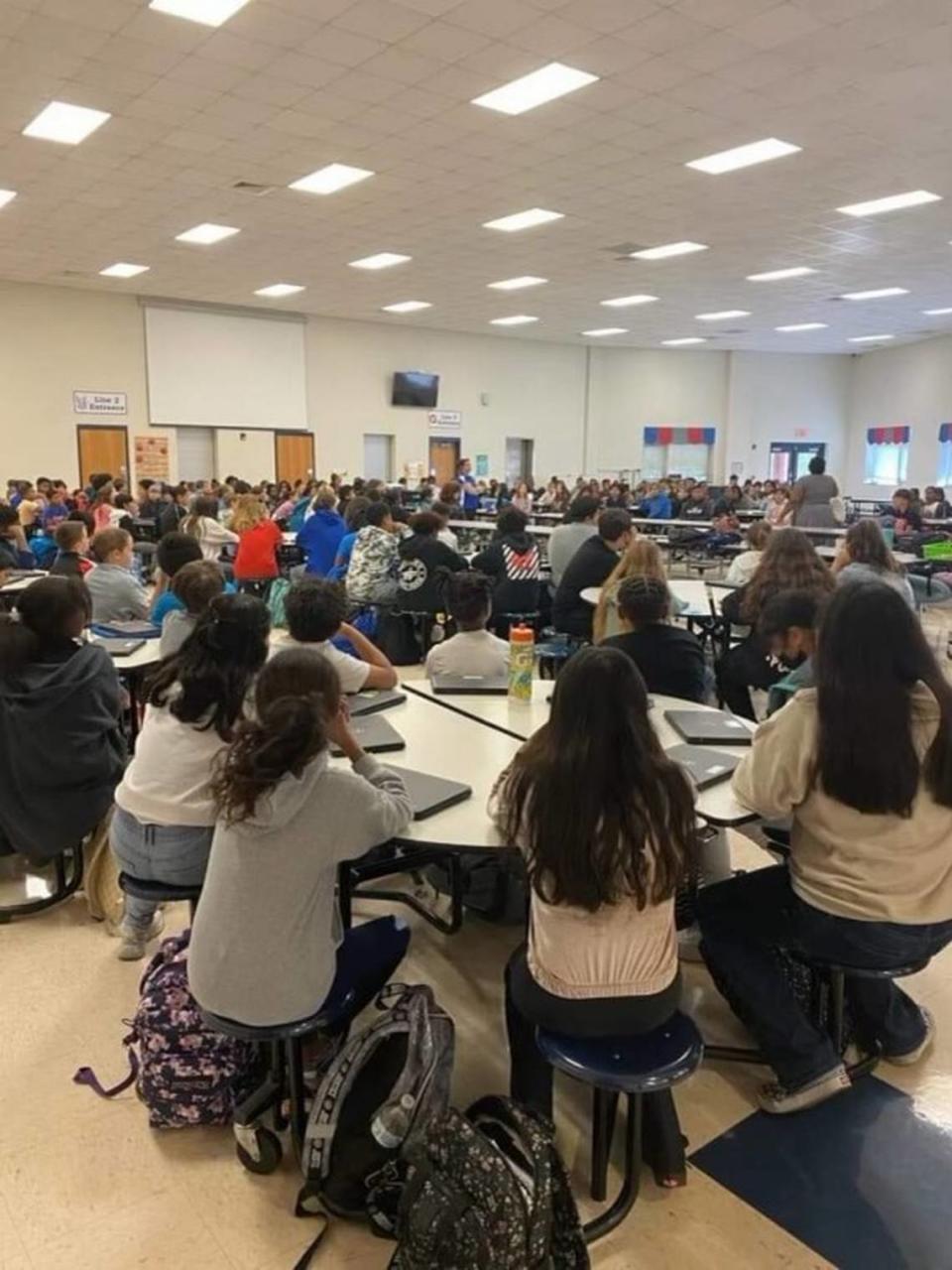‘Just given up.’ What’s next for parents after Cabarrus County redraws school lines?
Many Cabarrus County Schools parents knew the inevitable was coming Monday night.
After months of listening to and sitting through school board meetings, they were prepared to hear the 4-3 vote Monday that would change district lines for years to come and affect nearly 4,000 students next year. The district favored the long-term plan, or “Scenario C,” outlined on the CCS website and recommended by California-based consulting firm Cooperative Strategies.
“I think that most people have just given up,” Courtney Steinberg, a mom whose son attends Winecoff Elementary, told The Charlotte Observer in describing the general mood of parents. “The (school) board has not interacted in good faith, in my opinion. They haven’t spoken to people, and our actual concerns have not been addressed. People feel like they don’t care and will do what they want.”
The approved plan is designed to account for a projected increase in the student population that is expected to exceed 44,000 by 2032, Superintendent John Kopicki said. Cabarrus County’s population growth corresponds with a public school enrollment boom — a 21% increase in the previous decade, he said.
It also calls for building four new schools along with long-term construction and maintenance goals to reduce overcrowding, manage district feeder patterns, travel times, and ensure schools reflect area demographics.
Kopicki acknowledged during the meeting that the plan would not immediately solve every issue facing the district at first. But he reaffirmed that realignment was the best option now.
“Without question, I fully believe and am completely confident that the recommendation that sits before you after a year’s worth of homework, research, working with consultants, working with our own team is a better path forward for our school system,” he said.
Recommendations include building three new elementary schools and a high school and addressing deferred maintenance for current facilities would cost the district around $958 million to be funded as “funding sources are identified and become available,” according to Cooperative Strategies facilities master plan recommendations.
Parents ‘disappointed’ in Cabarrus school board

Michelle Morrison, one of the many parents who spoke during Monday’s meeting, said changes to the realignment plan suggested by the public should have been considered before moving forward with a vote.
“Rushing to finalize the realignment without due consideration for alternative options is concerning,” she said. “The community’s input has been completely disregarded in response to our concerns.”
Under plan C, elementary schools A.T. Allen, Charles Boger, Cox Mill, Harrisburg, Hickory Ridge, Mount Pleasant, Patriots, Pitt School Road, Rocky River, W.M. Irvin, Weddington Hills, Winecoff, and Wolf Meadow would be affected. Patriots Elementary could have the biggest net gain of students, at 250, according to district projections.
The largest net losses of students could include A.T. Allen and Winecoff elementary schools, at 341 students. All middle schools could see students zoned elsewhere, except Concord and Hickory Ridge. CC Griffin could have the largest net loss of students, at 169. Roberta Road Middle could have a net loss of 120 students. Harris Road Middle is projected to gain 120 students.
All high schools, except Hickory Ridge and Concord, could see students zoned out. Among those high schools, West Cabarrus could have a net loss of the most students, 274. Central Cabarrus Could gain the largest number of students, 220, according to district projections.
A total of 1,912 elementary school students, 1,508 middle schoolers and 568 high schoolers would be affected, according to district projections.
The district last week also voted to close Beverly Hills Elementary, a school with 341 students that has been open since the 1950s, as part of the plan because of its expensive 22.3 million price tag to repair and rehab.
“We were very disappointed that the vote (to close Beverly Hills) went the way it did,” said Chisholm, whose daughter attends Beverly Hills Elementary and is frustrated that the district has yet to provide clarity on where some students will be housed. “I’m very disappointed in Cabarrus County Schools. School closure should have never been considered part of realignment.”
Why is there ‘urgency’?

Chisholm, like Steinberg, claimed CCS did not fully communicate its redistricting plans and instructed parents not to engage with school board members or ask questions about realignment presentations during initial public meetings. However, people were encouraged to provide feedback about the various scenarios through an online survey and questionnaires on the district website.
“I am concerned that the Board of Education did not actually weigh in much on where the district boundaries would go, where schools would go, and the fact that Beverly Hills was going to close,” Chisholm said.
The precarious nature of realignment — how it impacts students and limits actual school choice opportunities — are among the concerns that drove CCS board member Rob Walter to vote against the plan tentatively scheduled to be implemented in the fall.
“There seems to be an urgency to approve the recommended plan for next year,” he told the Observer. “I have several concerns about recommendations not focused enough on school utilization, future capital plan details, program choice changes, or dramatic impacts to specific schools. We are experiencing a whole lot of growth in our county, and we should probably focus on how best to address that challenge.”
Leaving public school?
The fallout from the realignment has some parents considering education alternatives for their children.
Steinberg said she “is prepared to home school” if her son isn’t provided “the education he needs.”
“It’s too late for us to try and go to private school because those applications are closed,” she said. “I will consider other alternatives when I am able.”
Some parents, however, may leave the district because of realignment and consider charter and private schools for stability.
“A lot of parents are considering charter and private school,” said Chisholm, who spoke at Monday’s meeting. “Because I believe in public schools, I’m not going to bail and go to a charter school. I don’t have the means to go to private school. Even if I did, I wouldn’t choose that at this point because I want to be part of the solution.”
District plan could impact school board primary
For some, a solution might be a shakeup of the current school board amid the Cabarrus County primary elections.
Four seats are up for election on the Cabarrus County Board of Education in what will be a partisan race for the first after the N.C. General Assembly passed House Bill 88 last year.
“Every parent I’ve spoken with says yes,” said Steinberg about whether the issue will be a factor in the primary. “I think it will affect the way we look at a lot of elected officials.”
Greg Mills, a GOP candidate who supports realignment, suggested the opposite. He says pockets of residents are particularly vocal about realignment plan C, but he isn’t sure “there is significant fallout” that would lead to incumbents losing.
Walter, also running for reelection in the Republican primary, was candid about how all candidates should be transparent with voters affected by realignment.
“The candidate or elected official should share why they voted or would vote a certain way,” he said. “The why helps the public and voters understand the thought process and priorities of the elected official.”

